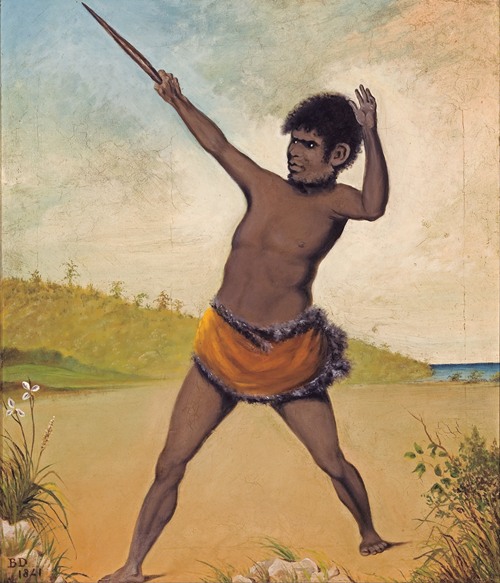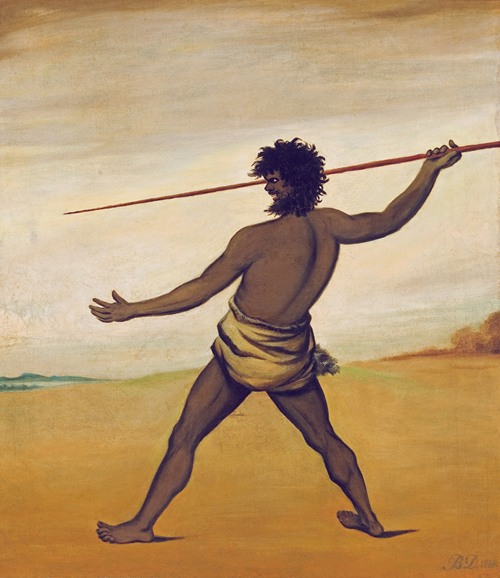

Benjamin Duterrau was an English painter, etcher, engraver, sculptor and art lecturer who emigrated to Tasmania. There he became known for his images of Indigenous people and Australian history paintings.
Duterrau was born in Soho in London, and was of Anglo-French descent. The parish record of Saint Anne, Soho, gives his baptism date as 24 March 1768, father 'Benjamin Dutterreau' and mother 'Sarah'. His father was a watchmaker. Duterrau was apprenticed to an engraver and in 1790 did two coloured stipple engraving after George Morland, The Farmer's Door and The Squire's Door. Taking up painting, between 1817 and 1823 he exhibited six portraits at Royal Academy exhibitions, and he also exhibited three genre pieces at the British Institution about the same period.
Duterrau emigrated to Van Diemen's Land (now Tasmania), arriving in August 1832 with his daughter. He lived at the corner of Campbell and Patrick Streets in Hobart, and practised as a portrait painter. In 1833, at the Hobart Mechanics' Hall, he was the first man in the colony to give a lecture on art. In 1835 he did some etchings of Indigenous Australians, the first examples of that craft to be done in Australia. His most famous painting "The Conciliation" (1840) is in the Tasmanian Museum and Art Gallery in Hobart, which was intended to be a study for his "A National Picture", a 3.04m x 4.26m epic which has been long missing. A self-portrait and other works, including some modelling in relief, also hang in the Tasmanian Museum and Art Gallery. A large landscape is in the Beattie collection at Launceston, and he is also represented in the Dixon collection at Sydney. Duterrau died at Hobart in 1851.
His daughter Jane (1812–1885) married John Bogle (1808–1879), a colonial merchant, in Hobart, Tasmania in February 1838, before returning to Britain. Their son Adam played for the Royal Engineers in the 1872 FA Cup Final.
Duterrau's gravestone lies in Hobart's Tasmanian Museum and Art Gallery.

